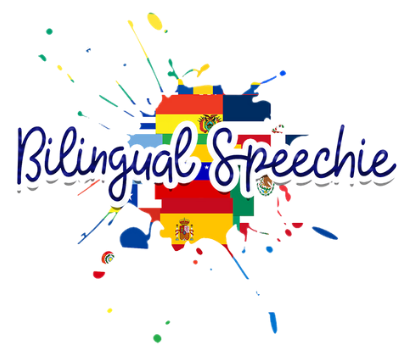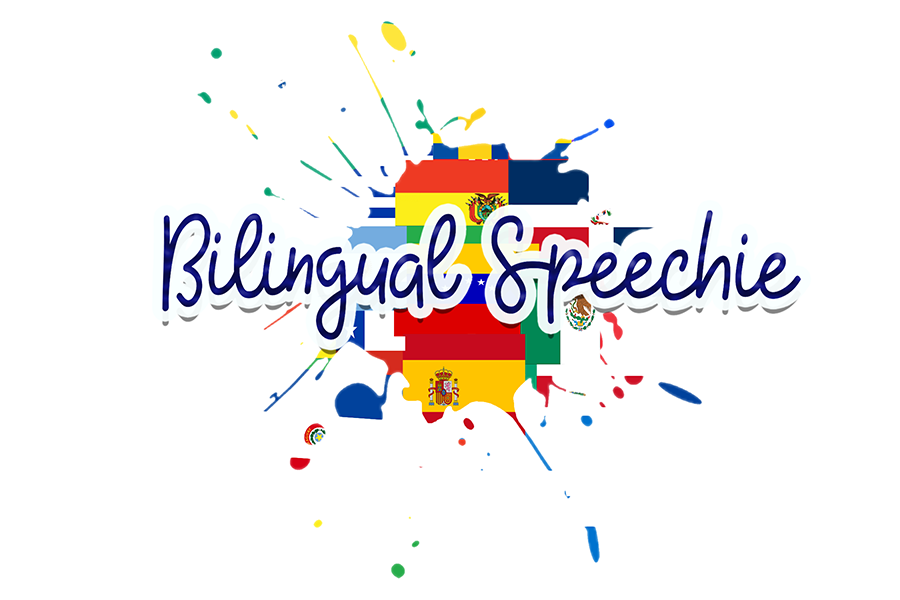by Liliana Diaz July 13, 2020
Do you want to raise your child to become bilingual? Do you want to maintain your native language at home? Then there are two important terms that you must become familiar with: Subtractive Bilingualism & Additive Bilingualism. Knowing the difference between these two terms will allow you to best support your child at home in your native language.
Let’s start with knowing what subtractive bilingualism is. Subtractive bilingualism is when individuals learn a second language at the expense of the first language meaning that individuals often lose skills and fluency in their primary language, especially is the primary language is not being reinforced. You may hear other terms in reference to subtractive bilingualism such as “language attrition” or “language loss.”
In the United States, most children attend preschool programs in which the language of instruction is primarily English. In some cases, some schools may offer bilingual programs however, it is important to look into the type of bilingual program that the school offers because some programs tend to only build the student’s language proficiency in English. It can be expected that once a child enters an English-only program, the child’s preference and vocabulary in English will often increase as his/her native language proficiency skills decrease. You can learn more about the best types of bilingual programs here.
Believe it or not, gender may play a role in your child’s ability to become bilingual. In a study by (Chavez 1993), females tended to have lower expressive skills in their native language and higher skills in English when compared to males. Chavez also suggested that higher education levels may also lead to higher English proficiency and loss in the native language. In his study, women in rural communities often sought out jobs that required a high degree of English proficiency which negatively impacted their Spanish proficiency. As you can imagine, a person that may be in fear of loosing his/her job might want to focus on perfecting his/her skills in English which can eventually lead to loss in the person’s native language if it’s not maintained. In addition, having a higher education level can result in higher English proficiency skills and loss of skills in the native language because English is often the primary language of instruction.
The perception that the general status of the home language is low relative to that of the dominant language (English in the US) is a very common perception that is built on the hardships that some immigrant families go through. When some families migrate to the United States, they might be faced with the hardship of having to learn English in order to find a job, pay their bills, go to the grocery store, communicate with people in the community, etc. I often think about my father who had to learn English in order to successfully start his mechanic business. He went through many hardships along the journey in order to learn English. In result, he would often tell me that in order to be successful, I had to go to school (college) and master English. The idea of true success amongst immigrant families is often related to mastering the dominant language, going to school and getting a job. However, we know that this perception doesn’t prove to be true. You do not need to only learn just one language to be successful. There are many advantages to being bilingual, some advantages include increased cognitive skills and cognitive flexibility. You can more on the benefits here.
Large use of the second language at home can also lead to language loss in the first language. Bilingual parents that went to English-only school programs, were raised in the U.S., or often communicate in English might feel more comfortable communicating at home in the second language (which is ok and normal). However, if the second language (English) is predominately used at home and your child is aware that both parents can understand and speak English, this can cause a shift in the child’s language preference and he/she might only want to speak English.
There are several factors within the environment that can either support or result in language loss for your child. Some of these factors may seem out of your control however, according to (Goldstein, 2004) peer interactions in English-only can cause a shift in the child’s language preference and lead to rapid loss. In addition to living in a community that does not speak your native language or having siblings that also speak English can also lead to language loss of the native language. This is because the “reduction in use and input (i.e., listening to the language) hampers the furthering of skills in the language as well as the maintenance of acquired skills” (Goldstein, 2004).
After reading all of these factors that contribute to subtractive bilingualism, you may be thinking, “Oh no! These factors directly apply to my child and he/she will never learn their native language!” NOT TRUE. Although these factors may play a role in subtractive bilingualism, it’s not to say that your child will absolutely loose his/her native language skills if one of these factors applies. Of course, it is possible for your child to become bilingual, but it may take some dedication from your part. That’s why I had mentioned early on in this post that it is important to be familiar with both terms. Now let’s talk about Additive Bilingualism.
Additive Bilingualism is when an individual learns the second language while his/her first language and culture are maintained and reinforced. In order to maintain your child’s native language you need to remember these 3 important points. Consistency, Meaningful language models and Meaningful communication interactions at home and in the community.
Be consistent in the amount of exposure you are giving your child. Perhaps your native language will only be spoke at home, perhaps your native language is only spoken at grandparents house, perhaps your co-parent will only speak to your child in the native language? There is not a “best method” or “correct method” of bilingual parenting and there are several bilingual parenting methods you can look into. However, consistency will be key to the bilingual parenting method that you choose.
Encourage biliteracy! There are many advantages to being able to read in both languages. Biliteracy can increase your child’s overall academic skills, language skills, and literacy skills! In addition, reading to your child in your native language can help your child learn about his/her culture while maintaining your native language at home. In addition, research shows that reading to your child in their home language will facilitate easier reading proficiency in the second language.
Model, Model, Model! Children learn new words from the environment around them, this includes the input that you provide to them. Provide rich vocabulary models at home in your native language by labeling actions, nouns, adjectives, talking about your home routine and making meaningful connections with the words in your environment. Use rich vocabulary during your interactions with your child and allow them to ask questions in order to learn the new vocabulary.
Make meaningful interactions and relationships at home in your native language. Playful interactions amongst your family such as singing, dancing, and/or playing in your native language can make language learning fun! The last thing you would want to do is force your child to learn a language by sitting and drilling them with flashcards or apps on the iPad. Children learn through play! Make language learning fun by creating family bonds through play in your native language, take family trips to learn more about your culture, sing songs from your culture, learn nursery rhymes and games from your culture.
Comments will be approved before showing up.
by Liliana Diaz September 26, 2025
When parents hear the word “stuttering,” it can bring up worry or fear about their child’s future. For many years, stuttering was viewed only as a “problem to fix.” But today, new research and approaches help us see stuttering in a different, more affirming way—one that celebrates communication in all its forms and embraces verbal diversity.
by Liliana Diaz September 26, 2025
As parents, it’s natural to notice how your child talks and to wonder whether their speech is developing as expected. If your child is hard to understand or struggles to say certain sounds, you may have heard the term “speech sound disorder.” But what does that mean? Let’s break it down together.
by Liliana Diaz September 26, 2025
As parents, we celebrate every new word, every little sound, and every funny phrase our children come up with. But sometimes, you may find yourself wondering: “Should my child be talking more by now?” or “Is this a sign of a speech delay?”

Who are we?
Bilingual Speechie LLC. is a small business dedicated to providing inclusive and engaging speech therapy resources and activities for bilingual children, parents, SLPs and educators.
Bilingual Speechie LLC promotes bilingualism and multilingualism by dispelling common myths, providing education on bilingual language development, and promoting heritage language maintenance amongst bilingual families.
About the Owner:
Liliana Diaz-Vazquez is a certified licensed bilingual speech language pathologist (SLP), currently practicing in Chicago, Illinois. She obtained her bachelor’s degree in communication disorders (2012) and her master’s degree in speech language pathology at Saint Xavier University (2014). She is a certified member of the American Speech-Language and Hearing Association (ASHA) since 2014, a member of the Illinois Speech and Hearing Association (ISHA) since 2014 and maintains licensure in the state of Illinois.
Liliana is a first-generation Mexican-American Latina, a small business owner, a full-time school-based SLP, & a bilingual parent, who takes pride in her roots, culture, & heritage language. She loves being able to share her experience as a Latina SLP, and a bilingual mom, as well as her culture & heritage language with the educator, SLP, and parent community.
Liliana Diaz-Vazquez has extensive experience working with the bilingual English and Spanish speaking population & multilingual population. She specializes in augmentative/alternative communication (AAC), bilingual language development and language delays/disorders in bilingual/multilingual children. She has also worked in the early intervention setting for several years where she gained vast experience working with interpreters and bilingual/multilingual families.
Liliana began creating digital bilingual resources and activities in 2014 out of need while working full-time in the school setting as a SLP. Liliana worked with many Spanish-speaking families and quickly realized that there were limited Spanish and bilingual speech therapy resources available for her students and their families. In addition, Liliana quickly became aware that there was a need for education about bilingualism and typical bilingual language development as many of the families she worked with had encountered misinformation about bilingualism. Liliana began developing resources and eventually started Bilingual Speechie LLC with the mission to provide education to SLPs and families about bilingualism, as well as provide inclusive and diverse materials for speech therapy in order to help bilingual families and SLPs gain access to appropriate bilingual materials for children with communication disorders.
Today Liliana currently works full-time in the Chicago public school setting as a lead bilingual SLP where she consults and collaborates with SLPs daily to help them understand how to assess and provide culturally and linguistically appropriate services for bilingual and/or multilingual students. She also runs her small business, Bilingual Speechie LLC, and is on a mission to expand and grow her business so that all SLPs, educators, and families can have access to inclusive, diverse, and bilingual resources in a variety of languages for speech therapy.
Professional Development:
Liliana has vast experience as a speaker/presenter and has presented at several conferences over the years. You can view all previous conferences and topics that Liliana has presented on here. Liliana is available to present on topics such as best practices when working with multilingual populations, bilingual speech/language assessment and treatment, goal writing with multilingual populations and much more. If you are interested in booking Liliana for a conference or event please don't hesitate to send an email at lilianadiaz@bilingualspeechie.com
 English
en
English
en
 English
en
English
en


Liliana Diaz
Author